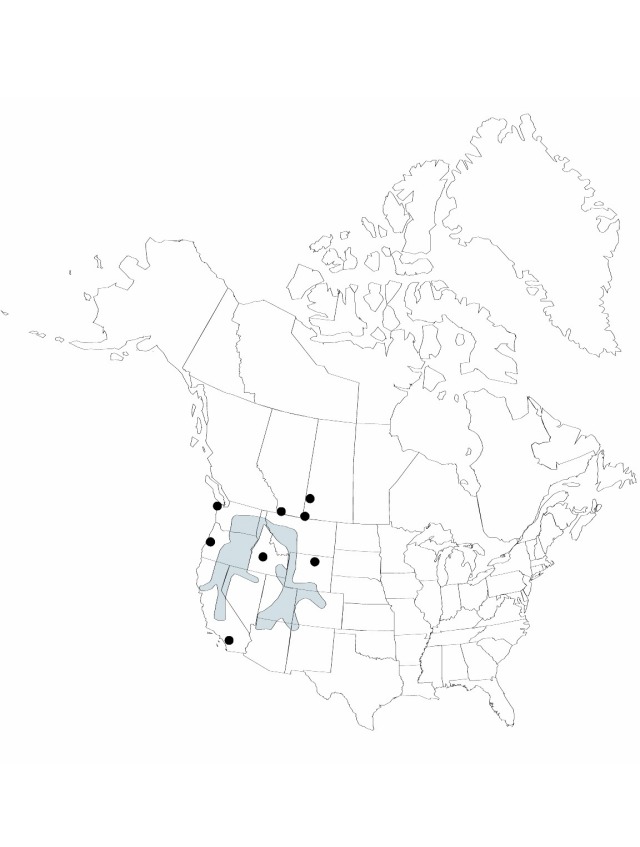Juncus nevadensis
Proceedings of the American Academy of Arts and Sciences 14: 303. 1879.
Herbs, perennial, rhizomatous, 0.5–7 dm. Rhizomes 1 mm diam., not swollen. Culms erect, terete, 1.5–3 mm diam., smooth. Cataphylls 0–1, maroon or straw-colored, apex acute. Leaves: basal 1–3, cauline 1–2; auricles 1–3.2 mm, apex rounded to acute, membranaceous; blade green, laterally flattened, 1.5–31 cm × 0.5–2.2 mm. Inflorescences terminal panicles of 2–11 heads, 2–18 cm, branches erect to spreading; primary bract erect; heads 3–11-flowered, hemispheric to obpyramidal (rarely nearly spheric), 5–14 mm diam. Flowers: tepals dark brown to white, lanceolate, apex acute to acuminate, mucro subulate; outer tepals 2.8–6.2 mm; inner tepals 2.4–6 mm; stamens 6, anthers 1–2 times filament length. Capsules included to slightly exserted, chestnut brown, ellipsoid, 2.3–3.7 mm, abruptly contracted to apex, apex acute proximal to beak, valves separating at dehiscence. Seeds ellipsoid, 0.4–0.5 mm, not tailed.
Phenology: Fruiting early summer–fall.
Habitat: Wet banks along margins of streams and lakes, marshes, bogs, sloughs, and wet or boggy prairies
Elevation: 0–2600 m
Distribution

Alta., Sask., Ariz., Calif., Colo., Idaho, Mont., N.Mex., Nev., Oreg., Utah, Wash., Wyo.
Discussion
This variable species has been divided into five separate taxa in the past (F. J. Hermann 1964; C. L. Hitchcock et al. 1955–1969, vol. 1), but more recently, most of the variants have not been separated (A. Cronquist et al. 1972+, vol. 6). The Oregon coastal endemic, Juncus nevadensis var. inventus L. F. Henderson) C. L. Hitchcock, is at one extreme of the variation, having only a single head, fairly dark brown tepals 3.5–4.5 mm, anthers only slightly longer than the filaments, and a distinct habitat. The J. mertensianus var. columbianus segregate, however, approaches var. inventus in number of heads, and the other characters are so highly variable in the complex, they cannot be used alone to separate this variety. Therefore, we are not recognizing any infraspecific taxa at this time.
Selected References
None.
